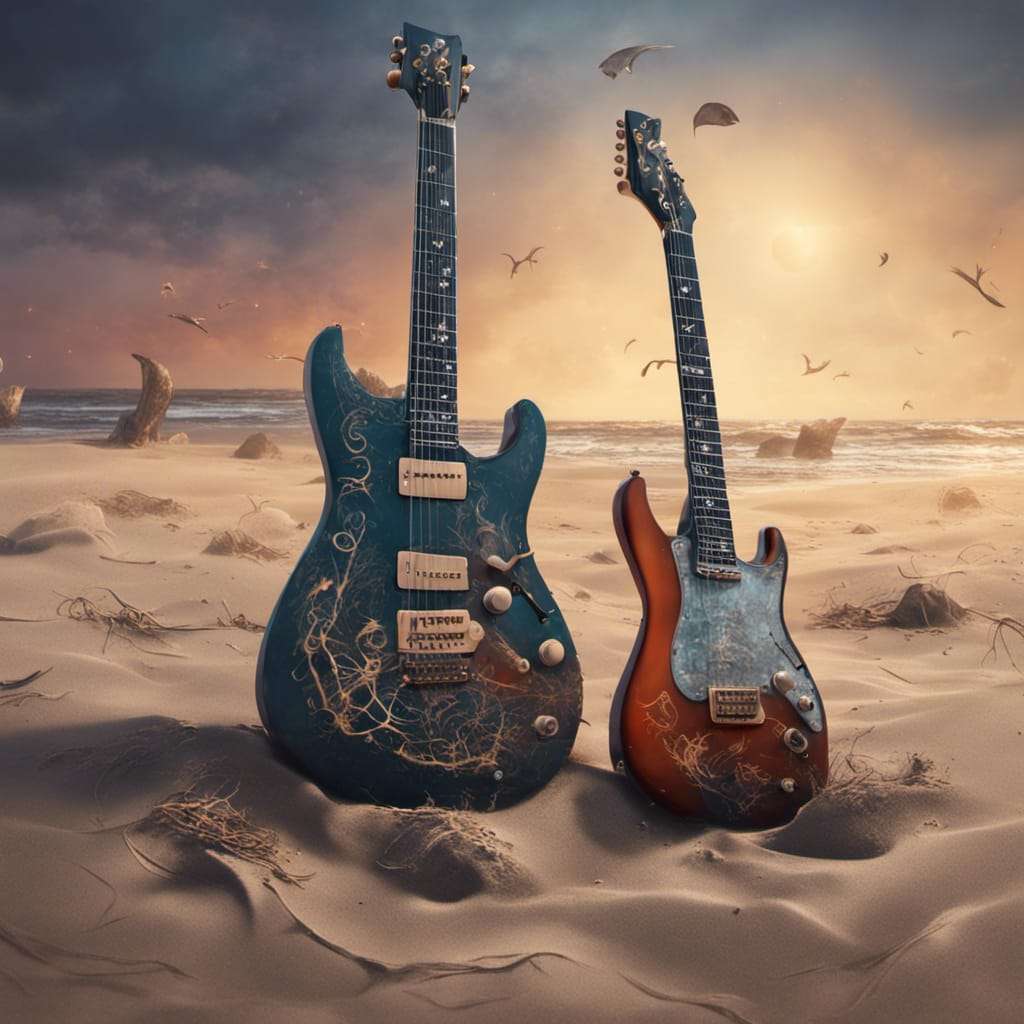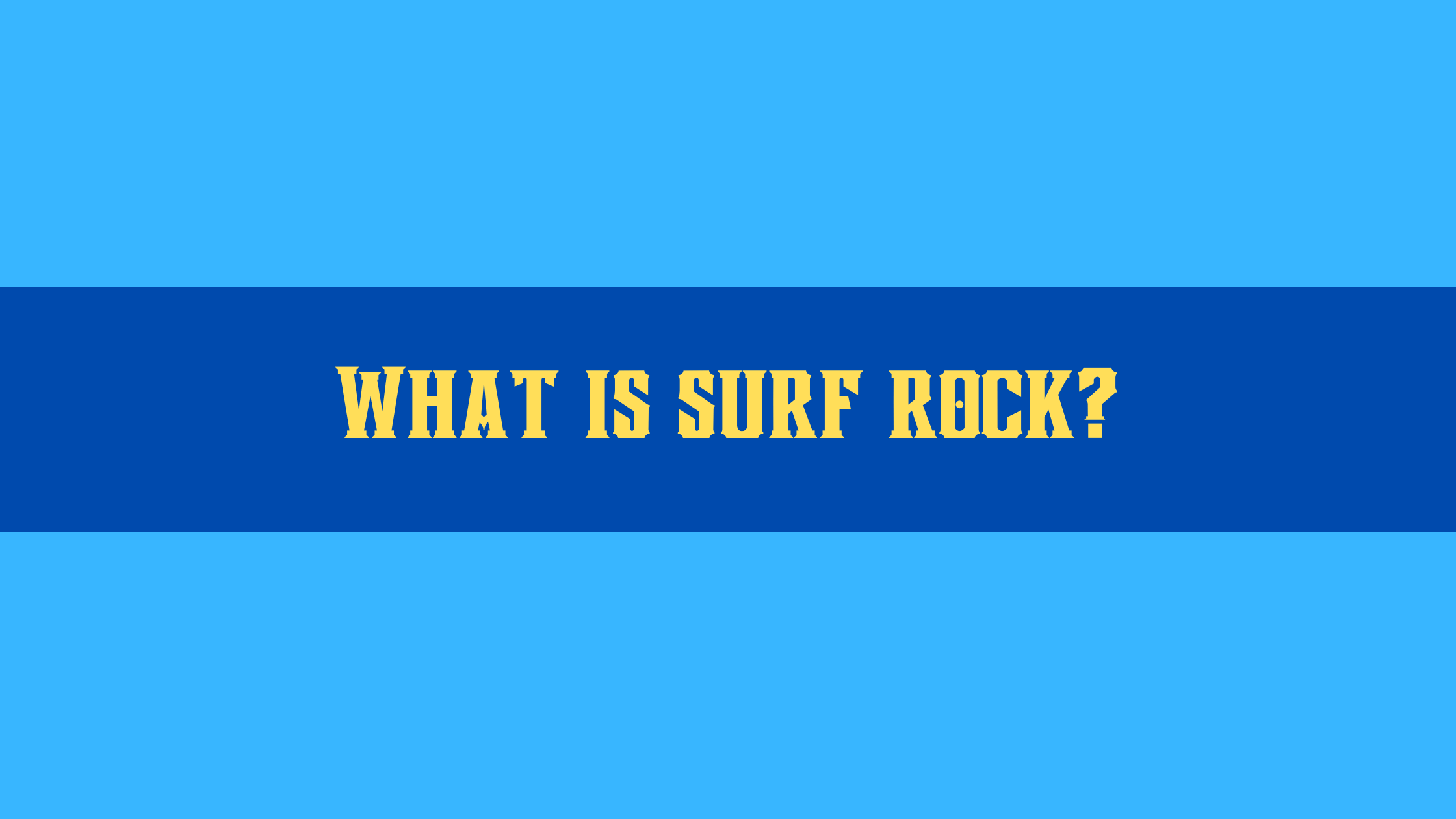Surf rock, a genre that emerged in the early 1960s, holds a unique place in the tapestry of popular music. With its unmistakable guitar-driven sound, it conjures images of sun, sand, and crashing waves. In this article, we’ll delve into the historical roots of surf rock, exploring the early influences that shaped it and the key figures who pioneered the genre.
Early Influences
Surf rock didn’t materialize in isolation; it was born from a rich blend of musical and cultural influences. One of the key ingredients was the surf culture itself, with its emphasis on adventure, freedom, and the thrill of riding the waves. This subculture, centered primarily in Southern California, provided the backdrop against which surf rock would flourish.
Musical Influences: Surf rock drew from a diverse range of musical genres. The twangy, reverb-drenched guitar sounds were heavily inspired by early rock ‘n’ roll and rockabilly. Artists like Chuck Berry and Duane Eddy played a pivotal role in shaping the guitar-driven sound of surf rock. The rhythm and blues of the time also left its mark, infusing surf rock with a sense of groove and rhythm that made it instantly danceable.
Cultural Influences: Beyond the music, surf rock was deeply intertwined with the burgeoning surf culture of the 1960s. The sport of surfing, with its connection to the ocean and the California lifestyle, became a symbol of freedom and rebellion. Surfing icons like Duke Kahanamoku and the Beach Boys (who would later become synonymous with surf rock) embodied this culture, helping to popularize both the sport and the music.
The Birth of Surf Rock
The birth of surf rock can be attributed to a handful of visionary musicians and bands who recognized the potential of this unique fusion of influences. Southern California in the early 1960s was the ideal breeding ground for this genre, with its sunny climate, beaches, and a generation eager for a new musical sensation.
Key Figures and Bands: One of the most prominent figures in the early surf rock scene was Dick Dale, often referred to as the “King of Surf Guitar.” His blazing guitar style, characterized by rapid picking and innovative use of reverb, set the template for countless surf rock guitarists to come. Dale’s hit song “Misirlou” remains an iconic surf rock anthem.
Geographical and Social Context: Southern California, with its endless coastline and wave-rich beaches, was the natural epicenter of surf rock. The laid-back, sun-soaked lifestyle of the region provided the perfect backdrop for this genre to flourish. Young musicians, inspired by the surf culture around them, began to experiment with their music, creating a distinctive sound that embodied the spirit of the era.
In the following sections of this article, we’ll dive deeper into the musical characteristics of surf rock, the evolution of the genre, and its enduring influence on popular music. So, grab your board and ride the wave of surf rock history with us as we explore this iconic genre’s journey from beachside jam sessions to global recognition.
Characteristics of Surf Rock
Surf rock, with its distinctive sound and cultural roots, is a genre that has left an indelible mark on the music landscape. In this section, we’ll explore the key characteristics that define surf rock, from its musical elements to its deep connection with surf culture and its influence on other genres.
Musical Elements
Guitar Techniques:
At the heart of surf rock lies the electrifying guitar work that defines the genre. Surf rock guitarists are known for their virtuosic use of techniques like tremolo picking, rapid picking, and vibrato. These techniques create a sense of urgency and excitement, mimicking the rush of riding a wave. The surf rock guitar often features clean, twangy tones, with heavy use of Fender guitars like the Stratocaster and Jazzmaster.
Reverb:
Reverb is the secret sauce of surf rock. It’s the effect that gives the music its spacious, echoey quality, like the sound of waves crashing on a beach. The heavy use of reverb in surf rock is reminiscent of the vast ocean and adds a sense of depth and drama to the music.
Instrumentation:
In addition to the guitar, surf rock typically features a tight rhythm section, including bass guitar and drums. The bass often plays a prominent role, driving the melody alongside the lead guitar. Drums in surf rock are characterized by thunderous, rolling rhythms that evoke the sensation of waves breaking on the shore.
Iconic Surf Rock Songs:
To truly understand surf rock’s musical elements, it’s essential to listen to some of its iconic songs:
- “Pipeline” by The Chantays: This instrumental track showcases the signature surf rock guitar, with its rapid picking and reverb-drenched sound.
- “Walk, Don’t Run” by The Ventures: Known as one of the pioneers of instrumental surf rock, The Ventures’ hit is a masterclass in surf rock guitar playing.
Surf Culture and Imagery
Influence on Lyrics and Visuals:
Surf culture and imagery have had a profound impact on the lyrics and visuals of surf rock. Lyrics often revolve around themes of adventure, beach life, and the thrill of the ocean. Imagery associated with surf rock album covers and promotional materials frequently features surfboards, palm trees, and beach scenes, creating a visual aesthetic that complements the music.
Connection to Surfing:
Surf rock’s deep connection with surfing is evident not only in its lyrics but also in the rhythms and energy of the music itself. The exhilarating guitar riffs and rolling drum patterns mirror the sensations experienced while riding waves. It’s this synergy between music and sport that gives surf rock its unique authenticity.
Evolution and Influence
The Surf Revival
While surf rock enjoyed its heyday in the early 1960s, it experienced a resurgence in different decades. In the 1970s and 1980s, bands like The Beach Boys continued to keep the surf rock spirit alive with their harmonious tunes and beach-themed lyrics. Additionally, instrumental surf rock saw a resurgence in popularity during the 1990s, with bands like Man or Astro-man? and The Phantom Surfers.
Influence on Other Genres
Surf rock’s influence extends far beyond its own borders. It has left an indelible mark on various music genres. For instance, punk rock bands like The Ramones incorporated surf rock elements into their music, creating a subgenre known as “surf punk.” Garage rock bands drew inspiration from the raw energy of surf rock, and indie rock artists continue to infuse their music with its reverb-soaked guitar tones. Contemporary artists like Best Coast and Wavves also draw heavily from surf rock’s musical and cultural legacy, ensuring that the genre’s spirit lives on in new and exciting ways.

The Birth of Surf Rock Hotspots
When we think of surf rock, we inevitably picture the sun-kissed shores of Southern California, where this genre found its birthplace and epicenter. In this section, we’ll explore how Southern California became the hub of surf rock, delve into iconic venues like The Rendezvous Ballroom, and understand the role of surf culture and beach parties in shaping the scene.
Southern California: The Epicenter
The Perfect Setting:
Southern California’s emergence as the epicenter of surf rock was no accident. Its stunning coastline, with miles of pristine beaches and ideal surfing conditions, provided the perfect setting for the genre to flourish. The region’s year-round sunshine and a relaxed, beachy lifestyle fueled the creativity of young musicians who sought to capture the essence of the ocean and waves in their music.
The Rendezvous Ballroom:
One of the most legendary venues in the surf rock scene was The Rendezvous Ballroom in Balboa, Newport Beach. This iconic dance hall, perched right on the beach, played a pivotal role in the genre’s development. It was at The Rendezvous that bands like Dick Dale and His Del-Tones honed their craft and developed the electrifying surf rock sound. The venue’s unique location allowed concertgoers to dance to surf rock tunes while gazing out at the waves crashing on the shore—a sensory experience that became synonymous with the genre.
Surf Culture and Beach Parties
Shaping the Scene:
Surf culture was not just an influence on surf rock; it was integral to its DNA. The sport of surfing, with its emphasis on adventure, freedom, and the thrill of conquering nature, resonated deeply with the youth of Southern California. This culture provided the backdrop against which surf rock would come to life. The carefree spirit of surfers, their passion for the ocean, and their affinity for beachside gatherings all seeped into the music, giving it an infectious sense of vitality.
The Lifestyle-Music Connection:
Surf culture and surf rock were inseparable. The lyrics of many surf rock songs celebrated the surfers’ way of life, with themes of catching waves, hanging ten, and soaking up the sun. The energy and rhythm of the music mirrored the exhilaration of riding the waves. This connection between lifestyle and music made surf rock not just a genre but a sonic embodiment of a vibrant subculture.
Venues and Hangouts
Surf Rock Venues: Then and Now
Historic surf rock venues like The Rendezvous Ballroom may be iconic, but they weren’t the only stages for this music. Venues up and down the Southern California coast, from beachside clubs to high school gymnasiums, embraced surf rock. These venues became crucibles for innovation, where bands experimented with their sound and connected with enthusiastic audiences.
In recent years, the torch has been passed to contemporary venues that continue to support the surf rock genre. From indie clubs in beach towns to special surf rock events, these modern venues keep the spirit of surf rock alive, ensuring that the genre’s unmistakable sound continues to be heard and appreciated by new generations.
Surf Rock Festivals and Events
Celebrating the Music and Culture:
Surf rock festivals and events provide a vibrant platform for celebrating both the music and the culture that inspired it. These gatherings often feature live performances by established surf rock bands and emerging artists. They draw enthusiasts from around the world who share a passion for the genre and the surf lifestyle.
Notable surf rock events include the Surf Guitar 101 Convention and the International Surf Music Festival. Attendees can immerse themselves in surf rock’s unmistakable sound, enjoy beach parties, and even catch a few waves themselves. These events capture the essence of surf rock’s heyday while fostering a sense of community among surf rock aficionados.
Impact on Pop Culture and Beyond
Surf Rock in Movies and TV
The influence of surf rock extends beyond the music industry. It has made a significant impact on popular culture, particularly in the realm of film and television. Countless movies and TV shows have incorporated surf rock tracks into their soundtracks, creating memorable moments that evoke the spirit of the genre.
From Quentin Tarantino’s use of Dick Dale’s “Misirlou” in “Pulp Fiction” to the iconic surf rock theme of “Hawaii Five-O,” the music has become synonymous with beach scenes, car chases, and thrilling adventures. Surf rock’s inclusion in these visual mediums has solidified its place in the cultural zeitgeist.
Legacy and Influence
Carrying the Torch:
The legacy of surf rock continues to echo through the years. While the genre had its heyday in the early 1960s, its influence persists in contemporary music. Bands and artists from various genres draw inspiration from surf rock’s distinctive sound, incorporating elements like reverb-soaked guitars and rapid picking into their music.
Notable modern artists who carry the torch of surf rock include The Black Lips, Shannon and the Clams, and La Luz. These bands infuse their own unique styles with the spirit of surf rock, ensuring that the genre’s energy and innovation remain alive and well in the 21st century.
In conclusion, the birth of surf rock in Southern California, driven by the region’s culture, venues, and iconic beach parties, has left an indelible mark on music and popular culture. Its enduring legacy and ongoing influence are a testament to the enduring appeal of surf rock’s sun-soaked, wave-riding spirit.


